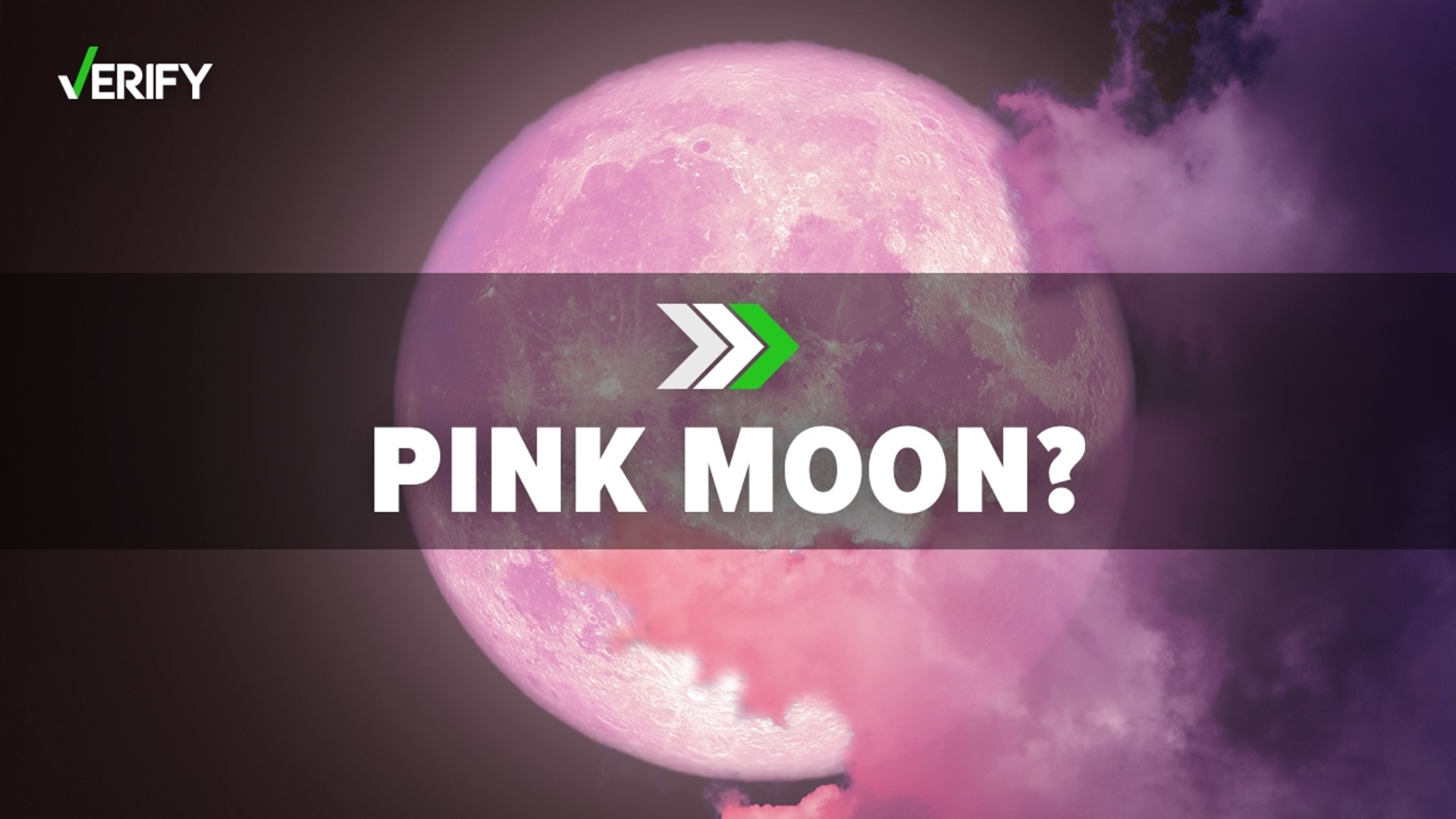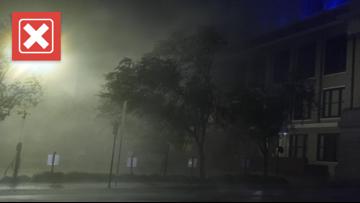April's full moon, known as the "pink moon," will rise on Wednesday, April 5, reaching its peak early Thursday morning.
Sandra texted the VERIFY team to ask: “What is the pink moon and when is it?” When the pink moon came around in both 2020 and 2021, viral social media posts shared photos that made the moon look literally pink.
THE QUESTION
Does the pink moon look pink?
THE SOURCES
- NASA
- Old Farmer's Almanac
- Farmers’ Almanac
- Jackie Faherty, senior scientist and senior education manager jointly in the Department of Astrophysics and the Department of Education at the American Museum of Natural History
- Noah Petro, project scientist for NASA’s Lunar Reconnaissance Orbiter mission
THE ANSWER
No, the pink moon does not look pink. It gets its name from a flower that blooms in April called creeping phlox.
WHAT WE FOUND
Every April, the month's full moon is known as the pink moon, NASA says.
“The most important thing to know is that the moon’s not turning pink,” said Jackie Faherty, a scientist and educator in the Department of Astrophysics at the American Museum of Natural History.
NASA says the nickname for each month’s full moon, including April’s pink moon, was popularized by farmers’ almanacs. The two most well-known farmers’ almanacs — the Farmers’ Almanac and the Old Farmer's Almanac — say the nickname was inspired by a pink springtime flower called creeping phlox, or moss phlox.


“Although we wish this name had to do with the color of the Moon, the reality is not quite as mystical or awe-inspiring,” the Old Farmer's Almanac says. “In truth, April’s full Moon often corresponded with the early springtime blooms of a certain wildflower native to eastern North America: Phlox subulata — commonly called creeping phlox or moss phlox — which also went by the name ‘moss pink.’”
Despite its name, the pink moon will not look pink to stargazers. The only reason the moon would ever appear to be a different color, Faherty said, is because of the way light passes through particles in the Earth’s atmosphere.
“So that's part of why I would also encourage people to look at the moon when it's close to the horizon — when it's rising or when it's setting — because at that point, you'll be looking at it through the most amount of the Earth's atmosphere, which is gonna have all sorts of things in it,” Faherty said. “And so unfortunately, the things that are going to make it look the prettiest are things that are super not great for humans.”
Faherty used volcanic eruptions and wildfires as an example, both of which launch ash and other small particles into the air, which can make the moon appear red or orange while close to the horizon. She said that, typically, the air would have to be particularly smoggy for the moon to appear a different color than normal while high in the sky.
The one exception to this rule, added Noah Petro, a lunar geologist at NASA, is during a lunar eclipse. That’s when the full moon passes into the shadow of the Earth.
“The moon changes color because the light from the sun is going through the Earth's atmosphere. And that light going through the Earth's atmosphere is that same brilliant color that we see at sunsets — that red, orange light — and that's reflected back off to us,” Petro said.
The Old Farmer's Almanac says two full moons can happen twice in the same month once every two and a half years. This is possible because the moon cycles through its phases every 29.5 days, and can happen in any month, including April. The second full moon of the month is always a blue moon no matter what month it happens in, the Old Farmers’ Almanac says.
Both almanacs say the tradition of nicknaming every month’s moon in North America began with Native American lunar calendars and was then adopted by early Colonial American settlers. Neither almanac has confirmed where the pink moon nickname originated.
Other cultures call April’s full moon by other names, such as Bak Poya in Sri Lanka, the frog moon by the Cree tribe and the sugar-making moon by the Ojibwe tribe. If April’s full moon is the first full moon of the spring season, it becomes the Paschal Moon in the Christian ecclesiastical calendar.
More from VERIFY: No, cold or rainy weather cannot make you sick












